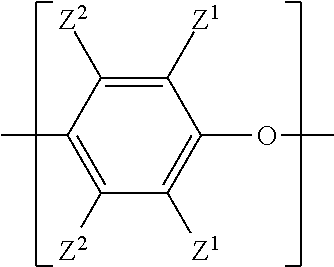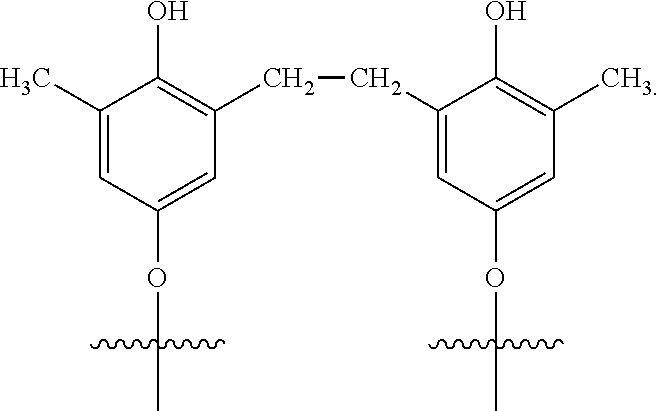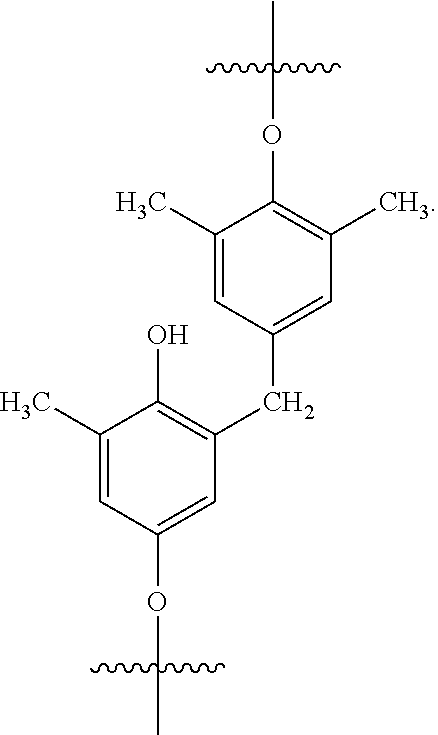Non-dusting poly(phenylene ether) particles
a technology of phenylene ether and non-dusting polymer, which is applied in the field of non-dusting poly (phenylene ether) particles, can solve the problems of dust being harmful, a fire and deflagration hazard, dust still being a problem in certain manufacturing operations, etc., and the effect of not abating the exhaus
- Summary
- Abstract
- Description
- Claims
- Application Information
AI Technical Summary
Benefits of technology
Problems solved by technology
Method used
Image
Examples
embodiment 1
[0070]Non-dusting poly(phenylene ether) particles, comprising: 80 to 96 weight percent of poly(phenylene ether) particles having a mean particle size of 1 to 40 micrometers; and 4 to 20 weight percent of a liquid reactive diluent; wherein all amounts are based on the combined weight of the poly(phenylene ether) particles and the liquid reactive diluent; and wherein poly(alkenyl aromatic) resins, rubber-modified poly(alkenyl aromatic) resins, and hydrogenated, partially hydrogenated, and non-hydrogenated block copolymers of an alkenyl aromatic monomer and a conjugated diene are all excluded from the non-dusting poly(phenylene ether) particles.
embodiment 2
[0071]The non-dusting poly(phenylene ether) particles of embodiment 1, further comprising 0 to less than 0.1 parts of liquid polyglycols, mineral oil, silicone fluid, and hydroxyl-terminated polybutadiene combined, per 100 parts poly(phenylene ether) particles.
embodiment 3
[0072]The non-dusting poly(phenylene ether) particles of embodiments 1 or 2, wherein the liquid reactive diluent is selected from a first polyol having at least two hydroxyl groups per molecule, a first epoxy resin, a first ethylenically unsaturated monomer, a polyether-modified polysiloxane, and combinations thereof.
PUM
| Property | Measurement | Unit |
|---|---|---|
| mean particle size | aaaaa | aaaaa |
| particle size | aaaaa | aaaaa |
| weight percent | aaaaa | aaaaa |
Abstract
Description
Claims
Application Information
 Login to View More
Login to View More - R&D
- Intellectual Property
- Life Sciences
- Materials
- Tech Scout
- Unparalleled Data Quality
- Higher Quality Content
- 60% Fewer Hallucinations
Browse by: Latest US Patents, China's latest patents, Technical Efficacy Thesaurus, Application Domain, Technology Topic, Popular Technical Reports.
© 2025 PatSnap. All rights reserved.Legal|Privacy policy|Modern Slavery Act Transparency Statement|Sitemap|About US| Contact US: help@patsnap.com



